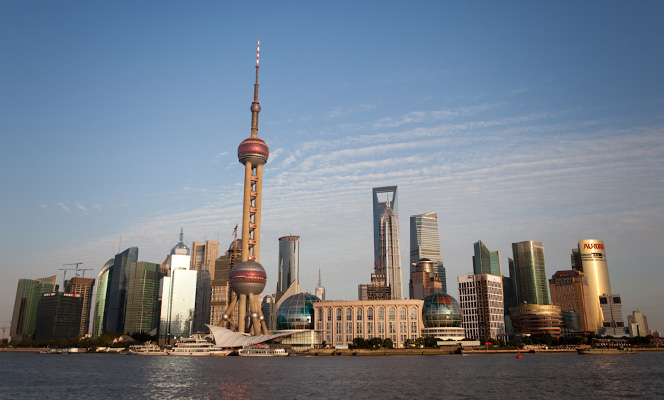The Future is Already Here
 Image: Jens Schott Knudsen
Image: Jens Schott Knudsen
This is the case even for relative newcomer, New Delhi. Its relationships with both Washington and other significant regional capitals (excluding Beijing and Islamabad) range from friendly to excellent. Even now, India conducts high-level naval exercises and military exchanges with the United States, Japan, Indonesia, Singapore and Vietnam. This is important because India, having gained the recognition it craved from the United States following the 2008 US-India nuclear agreement, seems happy to increasingly position itself as an independent but complementary pole to the existing security order in Asia. India has no territorial disputes with other major Asian powers (save China) and is already fully engaged in the whole alphabet soup of regional institutions except APEC.
Moreover, India, which already has the largest middle class in the world, is relying on the private sector to drive future growth. If it continues to grow through 2020 as rapidly as it has since the early 1990s, it is likely that consumption by the Indian middle classes will provide an enormously important export market to Asian manufacturers. Hence, there are few major economic or strategic frictions that might sour New Delhi’s broad standing in Asia or with the United States.
So what about China? If linear projections continue, by 2020 China will be the largest Asian economy and second largest in the world after the United States. Even though Chinese GDP per capita will still be around one fifth that of the United States, the absolute size of China’s population, combined with a state-corporate model that puts enormous resources in the hands of the government (rather than its people), will make China a regional superpower. It will overtake Russia and become the second largest defence spender after the United States, possess Asia’s most formidable navy and have the largest submarine fleet in the world. Its ballistic missile technology and cyber and satellite capabilities, in addition to its military hardware, will probably be advanced enough to cause America to think twice about engaging Beijing in any military exchange so far from home. This in turn could make taking back Taiwan by force very tempting for the Chinese.
Moreover, short of a dramatic reversal of current trends, China will become even more indispensable to the regional economy. It’s already the region’s primary export platform, importing more from the rest of Asia and exporting more to the rest of the world than any other Asian country. Through economic policies and incentives, as well as the fact that it holds $1.4 trillion of convertible dollar assets including $800 billion in US Treasury bonds, China has done a magnificent job of persuading the United States and Asian nations that it is a legitimate and indispensable rising power in the region. It is unthinkable that Asian states will support any economic containment initiative against the Chinese given the latter’s importance to the region’s prosperity. By 2020, China will most likely be the most important trading partner for regional giants such as Japan and India.
Yet, in discerning possible changes and disruptions to the geo-strategic landscape in 2020, the continued rise of China–especially if it remains authoritarian–is by a large measure the most important factor since China will be the only truly ‘revisionist’ great power for several reasons.
First, China will be the only great power in Asia that remains dissatisfied with its land and maritime borders. To its north, new tensions are likely over oil, coal and timber rich Russian territories in its Far East and Siberian land mass. There’s already an estimated 100,000 Chinese illegally settling in these areas. By 2020, it’s likely that over 100 million Chinese will be living in the Chinese territories within several hundred kilometres of the porous Russian border with only 5 to 10 million Russians remaining in the region. Siberia’s fresh water supply would also be tempting, given that China already has severe shortages throughout the country.
Moreover, China will not forego claims to the strategically important Indian territory of Arunachal Pradesh to its south, a territory lying between Bhutan and Myanmar that is roughly twice the size of Switzerland. To its east, the Taiwan issue remains unresolved, while China claims the Senkaku Islands currently controlled by Japan and all of the Spratly Islands, pitting it against other claimants the Philippines, Brunei, Malaysia, Vietnam and Taiwan. More generally, China seriously claims around 80 percent of the South China Sea as its ‘historic waters’, something that has been reiterated periodically by Beijing for several decades.










